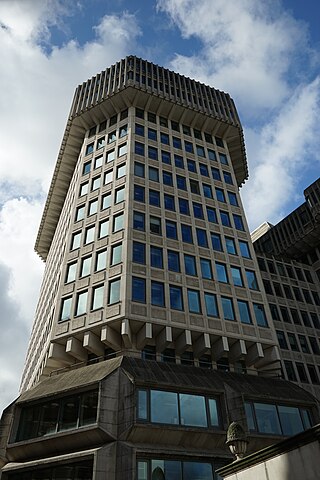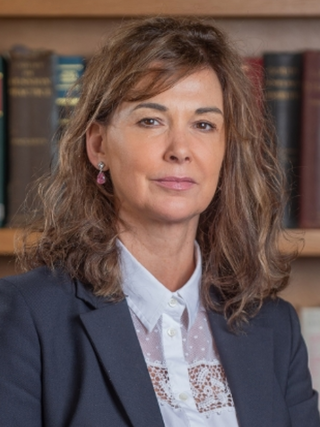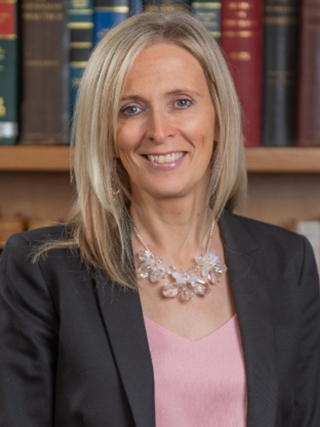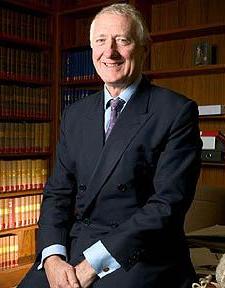
Farrer Herschell, 1st Baron Herschell,, was Lord High Chancellor of Great Britain in 1886, and again from 1892 to 1895.

The Government Legal Department is the largest in-house legal organisation in the United Kingdom's Government Legal Profession.

His Majesty's Advocate, known as the Lord Advocate, is the chief legal officer of the Scottish Government and the Crown in Scotland for both civil and criminal matters that fall within the devolved powers of the Scottish Parliament. They are the chief public prosecutor for Scotland and all prosecutions on indictment are conducted by the Crown Office and Procurator Fiscal Service in the Lord Advocate's name on behalf of the Monarch.

His Majesty's Solicitor General for Scotland is one of the Law Officers of the Crown, and the deputy of the Lord Advocate, whose duty is to advise the Scottish Government on Scots Law. They are also responsible for the Crown Office and Procurator Fiscal Service which together constitute the Criminal Prosecution Service in Scotland.

The Solicitor-General for Ireland was the holder of an Irish and then United Kingdom government office. The holder was a deputy to the Attorney-General for Ireland, and advised the Crown on Irish legal matters. On rare occasions, there was also a Deputy Attorney-General, who was distinct from the Solicitor-General. At least two holders of the office, Patrick Barnewall (1534–1550) and Sir Roger Wilbraham (1586-1603), played a leading role in Government, although in Barnewall's case, this may be partly because he, was also King's Serjeant. As with the Solicitor General for England and Wales, the Solicitor-General for Ireland was usually a barrister rather than a solicitor.
The Master of the Faculties is a judicial officer in the Faculty Office of the Archbishop of Canterbury and has some important powers in English law, in particular the appointment and regulation of public notaries. Since 1873 the position has always been held by the Dean of the Arches.

Sir Henry Egar Garfield Hodge professionally styled The Hon Mr Justice Hodge, was an English solicitor and Justice of the High Court of England and Wales.
The Solicitor-General of Victoria, known informally as the Solicitor-General, is the state's Second Law Officer and the deputy of the Attorney-General. The Solicitor-General acts alongside the Crown Advocate and Crown Solicitor, and serves as one of the legal and constitutional advisers of the Crown and its government in the Australian state of Victoria.

The Middleton family has been related to the British royal family by marriage since the wedding of Catherine Middleton and Prince William in April 2011, when she became the Duchess of Cambridge. The couple has three children, George, Charlotte and Louis. Tracing their origins back to the Tudor era, the Middleton family of Yorkshire of the late 18th century were recorded as owning property of the Rectory Manor of Wakefield with the land passing down to solicitor William Middleton who established the family law firm in Leeds which spanned five generations. Some members of the firm inherited woollen mills after the First World War. By the turn of the 20th century, the Middleton family had married into the British nobility and, by the 1920s, the family were playing host to the British royal family.
Solicitors Journal is a legal periodical published in the United Kingdom.
The Attorney-General of Barbados is the primary legal advisor to the Government of Barbados.
The Golden Jubilee Honours for the British Empire were announced on 21 June 1887 to celebrate the Golden Jubilee of Queen Victoria on 20 June 1887.
The Queen's Birthday Honours 1963 were appointments in many of the Commonwealth realms of Queen Elizabeth II to various orders and honours to reward and highlight good works by citizens of those countries. The appointments were made "on the occasion of the Celebration of Her Majesty's Birthday", and were published in supplements to the London Gazette of 31 May 1963.
The 1902 Birthday Honours were announced on 10 November 1902, to celebrate the birthday of Edward VII the previous day. The list included appointments to various orders and honours of the United Kingdom and the British Empire.
The 1903 Birthday Honours were announced on 9 November 1903, to celebrate the birthday of King Edward VII that day. The list included appointments to various orders and honours of the United Kingdom and the British Empire.
The Queen's Birthday Honours 1976 were appointments in many of the Commonwealth realms of Queen Elizabeth II to various orders and honours to reward and highlight good works by citizens of those countries. They were published on 4 June 1976 for the United Kingdom, Australia, New Zealand, Mauritius, Fiji, the Bahamas, Grenada, and Papua New Guinea. These were the first Birthday Honours on the advice of Papua New Guinean Ministers for Papua New Guinea, as the nation had gained independence from Australia on 16 September 1975.
The Queen's Birthday Honours 1899 were announced on 3 June 1899 in celebration of the birthday of Queen Victoria. The list included appointments to various orders and honours of the United Kingdom and British India.
The Queen's Birthday Honours 1898 were announced on 21 May 1898 in celebration of the birthday of Queen Victoria. The list included appointments to various orders and honours of the United Kingdom and British India.
The 1894 Birthday Honours were appointments by Queen Victoria to various orders and honours to reward and highlight good works by citizens of the British Empire. The appointments were made to celebrate the official birthday of The Queen, and were published in the London Gazette on 25 May 1894. and in The Times on 26 May 1894.

Gibson and Weldon was a law practice at 27 Chancery Lane in London and the name of its tutorial firm which from 1876 until 1962 prepared hundreds of thousands of future solicitors and barristers in England and Wales for their examinations. Gibson and Weldon also published the monthly journal Law Notes and a series of legal textbooks from adjacent offices at 25–26 Chancery Lane. The firm's principals were Albert Gibson (1852–1921) and Arthur William Weldon (1856–1943). After the death of Arthur Weldon the tutorial firm continued until 1962 when it was merged with the Law Society's own law school to form the College of Law.











